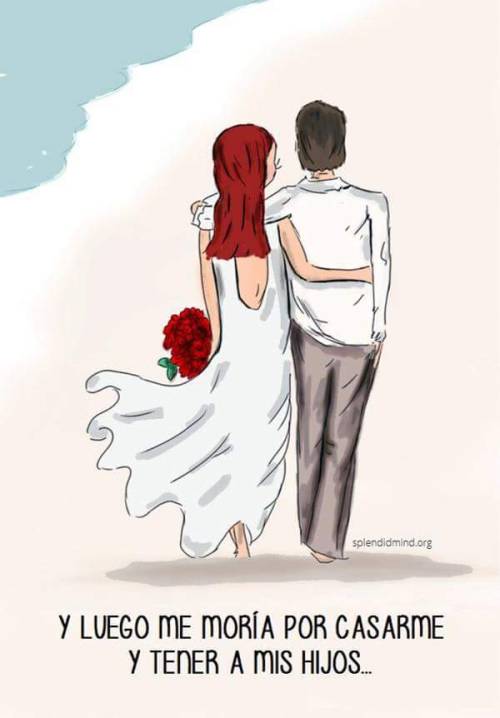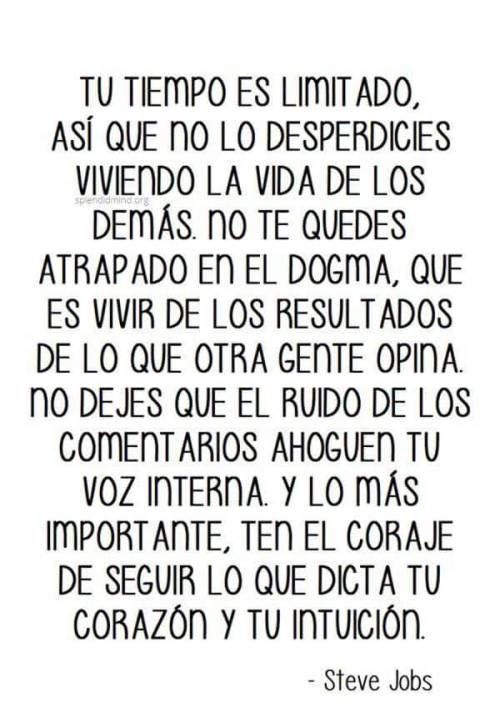Suspense And Foreshadowing—Two Great Tools For Writers
Suspense and Foreshadowing—Two Great Tools for Writers
I’ve found that foreshadowing and suspense often get confused. Sometimes writers even forget about them. It’s time for a quick reminder about why these are such great tools for writers and how you can use them in your next story.
What is Suspense?
Anyone can put together points in a story’s plot map. You’ve got your inciting incident, a few things that happen to move the story along, then the climax and resolution.
Suspense is what keeps the reader’s eyes glued to the page in between each of those stages.
It works in every genre and helps every story. It may even be what your work is missing if you’re stuck in your WIP because you’ve lost interest.
Example: Carver is a restaurant server and sees his crush, Aiden, get seated at Table 2 with his friends. He’s had this crush for forever and decides it’s now or never. He has to ask Aiden out before he leaves after dinner.
Where’s the suspense?: There’s an emotional suspense in the relatability of feeling nervous about asking someone out after crushing on them for a while. There’s also time-related suspense because sooner than later, Aiden will pay the check and leave. The clock is running out from the moment Carver makes his decision.
Where could you add suspense?: Carver might need to take on more tables because his coworker leaves for a family emergency. He’s rushing around twice as busy for the rest of the night. Then other guests need extra things, like another set of silverware or a ketchup refill. The night passes quickly, so Carver almost misses Aiden walking out to his car.
What is Foreshadowing?
Foreshadowing helps build your suspense. It’s one of the key ingredients that you can work into your first draft while you’re writing or while you’re in the editing process.
You don’t need foreshadowing in every story to create suspense or keep your reader interested. However, it can be a great way to support it.
Example: After Carver decides to stop by Aiden’s table before he leaves, he’s so busy serving other tables that the group in his window booth get up and leave. They’re irritated that their food is late, so they talk with the manager before leaving for another restaurant.
Why is this foreshadowing?: It demonstrates how the events building the suspense—the other server leaving suddenly and forcing Carver to serve twice as many tables—make it more likely that Carver will miss Aiden. It also mirror’s Carver’s Worst Case Scenario: that he’s now too busy to fulfill his goal before Aiden leaves, because he was too busy with his other tables to get food to his guests before they left too.
Other Forms of Suspense
Suspense can happen in a few ways besides general plot points. You can also heighten the tension with things like:
Making your characters feel the suspense for the reader (they get anxious, start acting out of fear, feel their stomach knot up, verbally snap at another character).
Changing the scenery (the lights go dark because the power goes out, other characters step between the protagonist and their goal, the protagonist must leave due to an unforeseen reason).
Using specific descriptive word choices (maybe the vibe in a room becomes tense, someone feels agitated, a foul odor burns at the protagonist’s nose and makes them uncomfortable)
Varying your sentence structure (choppy sentences create suspense, while long sentences sound more monotonous).
Introducing conflict for the protagonist (make things go wrong so they have to sweat through a few challenges to reach their goals).
Other Forms of Foreshadowing
You may have heard of a few of these before, but they could still be something your story needs to deepen your plot or become more gripping. Think about adding foreshadowing tools like:
Flashbacks: maybe your protagonist has tried and failed/succeeded at a similar goal before
Chekov’s gun: introduce something that your character will use in the future (could be a literal gun, an object that they’ll use later to accomplish their goal, a person they’ll come back to for the friendship they seek, a trauma they’re pushing away and eventually have to face)
A prophecy: could be a literal prophecy from an oracle, but could also be something lighthearted in a fortune cookie, a Magic 8 ball, something a character mentions in passing to the protagonist, etc.
Symbolism: your character might set out for their first day on a job and drive there in a terrible thunderstorm, show up to the wrong location, immediately break the copy machine, etc. Something negative in the environment or a character making a bad choice/mistake can be symbolic for their overall goal or phase of life.
A red herring: your character believes somebody or something to be their antagonist/the reason for their conflicts, but it turns out to be something or somebody else
When to Use Foreshadowing or Suspense
It would be great if every writer knew exactly how to use one or both of these tools while they were working through their first draft. That might be possible if you’ve spent a long time figuring out the exact plot before sitting down to write, but that isn’t always the case.
You could add new elements of suspense or moments of foreshadowing while you’re in the process of writing. Just make sure you note what your wrote and why so you can carry that thread through to its completion or revelation later on.
You can also add these moments while editing. If your first draft feels like it’s missing something, adding in a new conflict and revising to work it into the rest of the draft could greatly improve your story. It’s also possible to drop a foreshadowing device in one chapter and jump ahead to another to make it reappear/complete the foreshadowing.
More Posts from Blogmarkostuff and Others
Types of Opening Scenes for Your Novel
Here are a handful of ways to open the very first scene in your book! There are plenty more to explore, but these are a set of very tried and true methods.
Autobiographic - your protagonist starts the book reflecting or talking about a past event. They’re looking back in time and sharing an important piece of information with the reader.
In trouble/conflict - a problem has arisen for the protagonist and a sense of urgency is established. This can be an intense conflict like a chase scene or a puzzling problem.
Mysterious opening - the reader is introduced to something peculiar (a fantasy location, unique magic, a cloaked figure, etc.) that raises questions in their mind. Their curiosity will keep them reading.
Scene-setting - the most common opening where you focus on introducing the setting and the characters in it before anything else.
The questioner - the protagonist is questioning something: “Who invited the guy in the trench coat covered in red?”
Beginning with a thought - the novel is started with a philosophical quote or meaningful thought from the protagonist. “What is living worth if she’s not doing it with me?”
Intriguing dialogue - the book starts with interesting dialogue that captures the attention of the reader.
Mood establisher - the novel opens with a deliberate mood that signifies to the reader what they should expect from the story. Ex. a spooky story may open with eerie words and a dark atmosphere.
Instagram: coffeebeanwriting








Me gustaba su estilo, su elegancia, no cualquier mujer puede tener ese garbo de verse clásica como en el Partenón de Atenas con lineas y figuras estéticas en el vestir, que se complementan con las formas artísticas de su cuerpo. El Partenon de Atenas tenia esa lineas horizontales y verticales enmarcadas en una belleza estética clásica, sin lineas garigoleadas y góticas, sino simples en belleza, para demostrar la grandeza del pensamiento del hombre en lo simple sin perder lo estético, y arrojado en una pieza de arquitectura.
Asi era ella, o quizás asi la construia por el efecto de su belleza en mi corazón.
“Las Mil y Una Noches con Ms Beautiful”. Extracto.

Writing Tips
Scene Checklist
Does your scene include everything it should?
「 note: this is for the editing stage; remember, first draft is for the writer & editing is for the reader; get it down before worrying about these things unless it is just for practice 」
✧
ACTIONS
↦ are the actions necessary?
↦ are the verbs as descriptive as possible?
↦ do the actions match the character? why did the character take those actions?
↦ are the actions clear?
DIALOGUE
↦ what is the purpose for each statement?
↦ does each statement move the story forward?
↦ are the dialogue tags as descriptive as possible?
↦ does the dialogue match the character? why did the character say those things?
EMOTIONS
↦ are each character’s emotions clearly stated or implied?
↦ are the character’s emotions justifiable?
↦ how does the character’s emotions affect their actions?
LANGUAGE
↦ are you showing or telling?
↦ does the scene have clarity & coherence?
↦ does the scene have the desired tone, mood, & voice?
PURPOSE
↦ is this scene necessary? (if removed, would the story still make sense?)
↦ are there stakes at risk in this scene? is there tension?
↦ has something changed from the beginning to the end of the scene?
↦ possible purposes: advance the plot? reveal character goal? increase tension? develop character? reveal conflict? react to conflict? explain backstory? foreshadow? build world? reinforce theme, tone, or mood?
SETTING
↦ will your reader clearly know the setting throughout the scene?
↦ room? house? city? state? country? planet? galaxy?
↦ time of day? season of year? weather?
↦ chronologically within story?
STRUCTURE
↦ is there a distinct beginning, middle, and end?
↦ is the chronological order of events clear?
↦ does the scene smoothly transition from one to another?
✧
DWIGHT SWAIN’S SCENE VS SEQUEL
↦ Swain believed scenes should repeat these sequences in order to keep the interest of the reader piqued
↦ Swain says “a scene is a unit of conflict lived through by character and reader” & “a sequel is a unit of transition that links two scenes”
↦ scene: goal, conflict, disaster
⟿ goal: character’s decision to do something for a purpose
⟿ conflict: something opposing the character’s ability to achieve goal
⟿ disaster: a disruption or turning point to keep the readers hooked
↦ sequel: reaction, dilemma, decision
⟿ reaction: character’s emotional/analytical reaction to the disaster
⟿ dilemma: what should the character do now
⟿ decision: what does the character do now
↦ does your scene have one of these three-part patterns?
DWIGHT SWAIN’S MRU
↦ MRU: motivation-reaction units
↦ these are for alternating sentences or paragraphs
↦ motivation: objective thing your character externally senses (what happens?)
↦ reaction: subjective response your character internally has (how does your character react? feeling, reflex, action, dialogue?)
↦ this is very difficult to follow, especially without practice, but it is a way to guarantee your reader’s interest & attention
News Radio Promo at Radio Vida 2007

Story Edit Like A Pro!
If you begin a story edit with these questions to evaluate your characters, plot, and setting, you’ll be amazed at how this will help you improve your story!
Evaluating Characters
We’re going to look at characters first.
The cast of characters is the list of characters in your story. These characters act and react. They create emotion. They show motivation. Without any of this, you don’t have a story. That’s a tall order for your characters. So how do you make sure you’re getting the most out of them?
Who appears in each scene?
Having a list of your characters per scene gives a specific method for evaluating how you’re using the characters and shows you when you need to revise a scene.
It’s time to revise a scene if:
There are too many characters in a scene. Is every character required to achieve the purpose of the scene?
An introduced character lacks detail or has too much detail.
There are names that are too similar and might confuse the reader.
What are their goals?
A character goal is what a character wants. She should want it so badly that your readers feel her need in their guts. And failing to achieve the goal will be devastating.
What gets in the way of their goals?
Characters will drive the tension in your story, and tension is what keeps a reader reading. Putting obstacles in the way of achieving the goal will raise the tension.
Evaluating Plot
Plot is what happens in the story. It’s what your story is about. Here are three questions to help you evaluate each scene and how they relate to the plot.
What is the purpose of each scene?
There must always be a reason any given scene exists in your story. That’s what we mean by its purpose. A scene without a purpose will distract the reader from the main story. It may even bore the reader.
Is there an entry hook opening each scene?
Whatever you read at the beginning of the scene that keeps you reading is the scene entry hook. Every scene must have one by the end of the first three paragraphs or so.
Is there an exit hook at the end of each scene?
Whatever you read at the end of the scene that keeps you turning the page to the next scene is the exit hook. Every scene must have an exit hook. This includes a secret revealed, a cliffhanger, a clue, or a story twist.
Evaluating Settings
Finally, while you perform a story edit, examine your settings. Settings are key to keeping your reader engaged, so don’t ignore them.
Is the location you chose the best place for emotional impact?
Each scene must take place somewhere, and each location has the potential to ramp up emotion. Often a writer doesn’t think hard enough about where a scene takes place and doesn’t end up using locations effectively. Does the location elicit emotion in the reader or the characters? If not, choose a different location.
Are there objects relevant to the plot or characterization in each scene?
Watch a film without props or a backdrop, and you’d probably get confused or bored. You’d just be watching actors on an empty stage, which would make it hard to believe the reality they’re trying to portray.
Readers are much more engaged in a story if they can imagine the setting that stirs their emotions.
Are some of the 5 senses used in every scene?
Sensory details keep the “stage” and characters interesting. Without them, both the setting and the characters will seem flat. Using the POV character’s senses to describe the action will bring your reader closer to the character. So ensure the senses used show characterization or move the plot forward.
How To Write Friendships Pt. 2
🦢 ― &. FRIENDSHIPS . ( steps to develop friendships )
4) Give Them A History That Shines Through.
By no means do you want them to seem like they just met each other yesterday, if your two friends have known each other for a while now. What you need to do is throw out hints that these friends have known each other for a while ― you need to make the readers curious about these two friends and their history with each other.
And even if your characters meet within the timeline of the story, sneaking in hints that these characters are learning more about each other is a great way to develop your friendship.
Here are a few ways to show that:
1) Give Them An Inside Joke.
2) Give Them A Silly, On-going Argument.
Friends aren’t always going to agree on everything and their points of conflict don’t always have to be some dramatic issue ― they can be arguing over which one is better: Star Trek or Star Wars, they can argue over whether pineapple belong on pizza or not or maybe they argue over who is the taller one.
Giving them a silly, ongoing argument will make the characters feel real and simultaneously reveal different shades of their personality. Not only that, but it also offers a window into how they handle arguments between themselves. Who is the one that gets really worked up? Who is the one who makes all the great points?
3) Utilize Nonverbal Communication.
When you can start communicating with someone without words, that's when you really know someone. For example:
Let your characters be comfortable sitting in silence with each other
Use gestures and facial expressions to convey meaning to each other
Give them an unspoken rule
One friend asks a question, the other answers with silence
They can predict what each other are going to do
5) Create A Glue.
What is keeping your friends from parting ways? Without something to keep them together, your characters might grow apart. What is the glue that keeps this friendship intact? This can be a character, a goal, or the two of them are just thrown into a situation where they can't get away from each other.
One friend is the gardener of the other
The two of them must deliver a secret message to a Jedi
They both go the same extracurricular club
They are toys who both have been captured by an evil kid who likes to torture toys
One friend can't achieve his story goal without helping the other friend win a cart race
6) Create Meaningful Scenes.
Now that you have all the key components to an amazing friendship, it’s time to develop it through your story. Insert a few key friendship moments in your novel and show your reader the power of this relationship.
Here are some ideas:
One friend gives the other a gift
They play a game together
They share a jacket
They eat food together
They teach each other something
One friend gives the other a foot massage
7) Don't Make Their Relationship Perfect.
People aren’t perfect, and your friends can’t get along together all the time. But that doesn't mean you should stuff in a bunch of contrived conflict between your friendships. Instead, set up situations that will naturally occur because of who these characters are, and what they believe.
Maybe their differences get the better of them, maybe they react differently to a pivotal event in your novel, maybe one of the friend's internal demons gets the better of them, and the other friend has to call them out on it. This only results in more tension between them. This is an especially brilliant method to enhance a character arc.
Or simply make their friendship a more complex. Perhaps your two characters look out for one another, but they are always being compared to one another, and they need to overcome their deep feelings of jealousy for each other or they work well together, but one friend is keeping a lot of secrets from the other.
These complications and character differences not only add to your story, but watching these characters overcome these obstacles and still come out as friends makes your friendship feel more real, deep, and deserved.

True meaning of love! Love trough the light, coming out of beautiful eyes

Pro tips here
5 Quotes on Editing That Will Always Be Relevant

During January of our “Now What?” Months, we’re here to give you some inspiration and resources as you dive into those daunting edits on your novel. While we usually share lots of advice with you from contemporary authors, sometimes it’s nice to take a look back through history and realize that editing problems have always been the same:

1. James Baldwin
“Rewriting [is] very painful. You know it’s finished when you can’t do anything more to it, though it’s never exactly the way you want it… The hardest thing in the world is simplicity. And the most fearful thing, too. You have to strip yourself of all your disguises, some of which you didn’t know you had. You want to write a sentence as clean as a bone. That is the goal.”
Keep reading
-
 transparententhusiastmentality liked this · 5 months ago
transparententhusiastmentality liked this · 5 months ago -
 tgirlconstructionworker liked this · 6 months ago
tgirlconstructionworker liked this · 6 months ago -
 honestcivilian liked this · 6 months ago
honestcivilian liked this · 6 months ago -
 newdawnhorizon reblogged this · 7 months ago
newdawnhorizon reblogged this · 7 months ago -
 write-the-room liked this · 8 months ago
write-the-room liked this · 8 months ago -
 marti187 liked this · 9 months ago
marti187 liked this · 9 months ago -
 fwleminql liked this · 9 months ago
fwleminql liked this · 9 months ago -
 teethmarksonleather liked this · 9 months ago
teethmarksonleather liked this · 9 months ago -
 celinaemily liked this · 9 months ago
celinaemily liked this · 9 months ago -
 chiptan0011 liked this · 9 months ago
chiptan0011 liked this · 9 months ago -
 adorable-bookworm liked this · 9 months ago
adorable-bookworm liked this · 9 months ago -
 creativemonkey reblogged this · 9 months ago
creativemonkey reblogged this · 9 months ago -
 writtenandread reblogged this · 9 months ago
writtenandread reblogged this · 9 months ago -
 cursedberrycompote reblogged this · 9 months ago
cursedberrycompote reblogged this · 9 months ago -
 theimaginationcreation liked this · 9 months ago
theimaginationcreation liked this · 9 months ago -
 savyir-genesizz-the-wizard liked this · 9 months ago
savyir-genesizz-the-wizard liked this · 9 months ago -
 fandoms-you-never-knew-existed reblogged this · 9 months ago
fandoms-you-never-knew-existed reblogged this · 9 months ago -
 fandoms-you-never-knew-existed liked this · 9 months ago
fandoms-you-never-knew-existed liked this · 9 months ago -
 genericminecraftpotato reblogged this · 9 months ago
genericminecraftpotato reblogged this · 9 months ago -
 cepheusgalaxy reblogged this · 9 months ago
cepheusgalaxy reblogged this · 9 months ago -
 apricotsnow liked this · 9 months ago
apricotsnow liked this · 9 months ago -
 imarandomgamer liked this · 9 months ago
imarandomgamer liked this · 9 months ago -
 lazypanartist liked this · 9 months ago
lazypanartist liked this · 9 months ago -
 genderfluid-bat liked this · 9 months ago
genderfluid-bat liked this · 9 months ago -
 cynthffxiv liked this · 9 months ago
cynthffxiv liked this · 9 months ago -
 creation-help reblogged this · 9 months ago
creation-help reblogged this · 9 months ago -
 longroadtobe reblogged this · 11 months ago
longroadtobe reblogged this · 11 months ago -
 texasdreamer01 reblogged this · 11 months ago
texasdreamer01 reblogged this · 11 months ago -
 tooold4thisish liked this · 1 year ago
tooold4thisish liked this · 1 year ago -
 bleopieyippie liked this · 1 year ago
bleopieyippie liked this · 1 year ago -
 the0715universe reblogged this · 1 year ago
the0715universe reblogged this · 1 year ago -
 the0715universe liked this · 1 year ago
the0715universe liked this · 1 year ago -
 alunaloverworld reblogged this · 1 year ago
alunaloverworld reblogged this · 1 year ago -
 alunaloverworld liked this · 1 year ago
alunaloverworld liked this · 1 year ago -
 magicalenemymagazine liked this · 1 year ago
magicalenemymagazine liked this · 1 year ago -
 charlie-mac-posts liked this · 1 year ago
charlie-mac-posts liked this · 1 year ago -
 guendalynkbrennan liked this · 1 year ago
guendalynkbrennan liked this · 1 year ago -
 bingobongoxx liked this · 1 year ago
bingobongoxx liked this · 1 year ago -
 creativemonkey reblogged this · 1 year ago
creativemonkey reblogged this · 1 year ago -
 writeblrvoid reblogged this · 1 year ago
writeblrvoid reblogged this · 1 year ago -
 mizutoyama liked this · 1 year ago
mizutoyama liked this · 1 year ago -
 ai-shiteru-you liked this · 1 year ago
ai-shiteru-you liked this · 1 year ago -
 xlili-lyraterx liked this · 1 year ago
xlili-lyraterx liked this · 1 year ago -
 emprechoohana-blog liked this · 1 year ago
emprechoohana-blog liked this · 1 year ago -
 moss-on-a-tree15 liked this · 1 year ago
moss-on-a-tree15 liked this · 1 year ago -
 fourthwingisajoke liked this · 1 year ago
fourthwingisajoke liked this · 1 year ago
Here you will find some of the things that I really like. I like writing, music, poems, and producing any idea that comes to my mind. I hope you like it!
288 posts